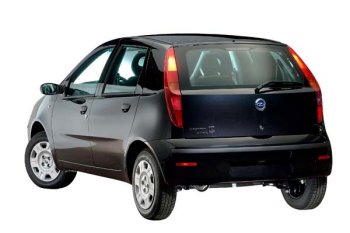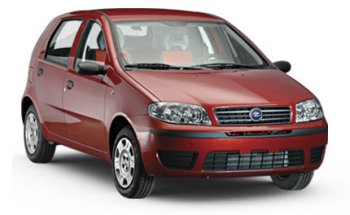|
Production under licence of the Fiat
Punto Mk2b by Zastava, which is known as the Zastava 10, will get underway at
the firm's assembly plant at Kragujevac later this week. Currently it is being
built in Italy and imported to Serbia. A ceremony will be held, attended by
Serbian dignitaries and government representatives, to mark the occasion.
Fiat has held a long association
with the former Yugoslavian national carmaker, with Zastava assembling a range
of Fiats under licence from 1955 across the second half of the last century,
including models such as the 1100, 600D and 128. However the Balkan wars during
the early years of the 1990s saw car production cease after the factory was
bombed by NATO.
In October 2005, once provision had been made to settle outstanding debts that
Zastava owed to Fiat, a new agreement was reached which sees the Serbian firm
building the Fiat Punto Mk2b under licence. The first stage of the agreement saw
the B-segment car being assembled by Fiat at its Mirafiori factory in Turin,
badged as a 'Zastava 10', with the Serbian factory staff assisting Fiat's own
workers as part of a training programme.
In the meantime a 15 million euro
investment has seen the factory at Kragujevac, located 130 km southeast of the
capital Belgrade, being prepared to assemble the Zastava 10. “Half of the sum
has been spent on the purchase and installation of production equipment,” said
Zastava Cars Director Zoran Mogdanović, with most of the funds coming from the
privatisation of some Zastava Group companies and from sales of the Zastava 10
to date. Since the war, car production at Kragujevac has slowly climbed back to
around 9 percent of pre-war levels of over 200,000 units per year, the new
Zastava 10 model will double the current output.
|
 |
|
Visually identical to the Punto Mk2b, the Zastava 10
is differentiated by its 'Zastava Auto' badges on
the front grille, tailgate, hub caps and steering
wheel, as well as 'Zastava 10' written on the
tailgate. |
|
|
 |
|
Production under licence of the Fiat Punto Mk2b by
Zastava, which is known as the Zastava 10, will get
underway at the firm's assembly plant at Kragujevac
later this week. |
|
|
Currently there are around 4,000 employees at the Kragujevac plant. As well as
selling the model domestically, Zastava is already exporting the Turin-built
version to other Balkan and Eastern European markets, with annual sales being
targeted at 16,000 units. During the opening months of this year the Zastava 10
has steadily increased its Serbian market share to over 10 percent.
Visually identical to the Punto Mk2b, the Zastava 10 is differentiated by its
'Zastava Auto' badges on the front grille, tailgate, hub caps and steering
wheel, as well as 'Zastava 10' written on the tailgate. One body style is
available, a 5-door hatchback, and one engine, Fiat's Euro IV compliant
1.2-litre petrol, which achieves 136 g/km CO2 emissions. This package allows the
Zastava 10 to achieve maximum power of 60 bhp at 5,000 rpm and maximum torque of
102 Nm at 2,500 rpm. Top speed is 155 km/h while 0-100 km/h is reached in 14.3
seconds. It has 14-inch wheels with 165/70R tyres and a 5-speed gearbox. The
Zastava 10 comes in the Fiat Punto's 'Active' trim specification, while optional
equipment includes two front airbags, climate control and electric-powered
windows.
Mogdanović sees this week's
commencement of production at Kragujevac as heralding the start of the rebirth
of the Serbian car industry. Zastava is also currently talking to GM's Opel
division about assembling one its models under licence and the Serbian
government is currently preparing to privatise the state-owned carmaker, by a
private tender process, at the end of this year.
|
|
|
|